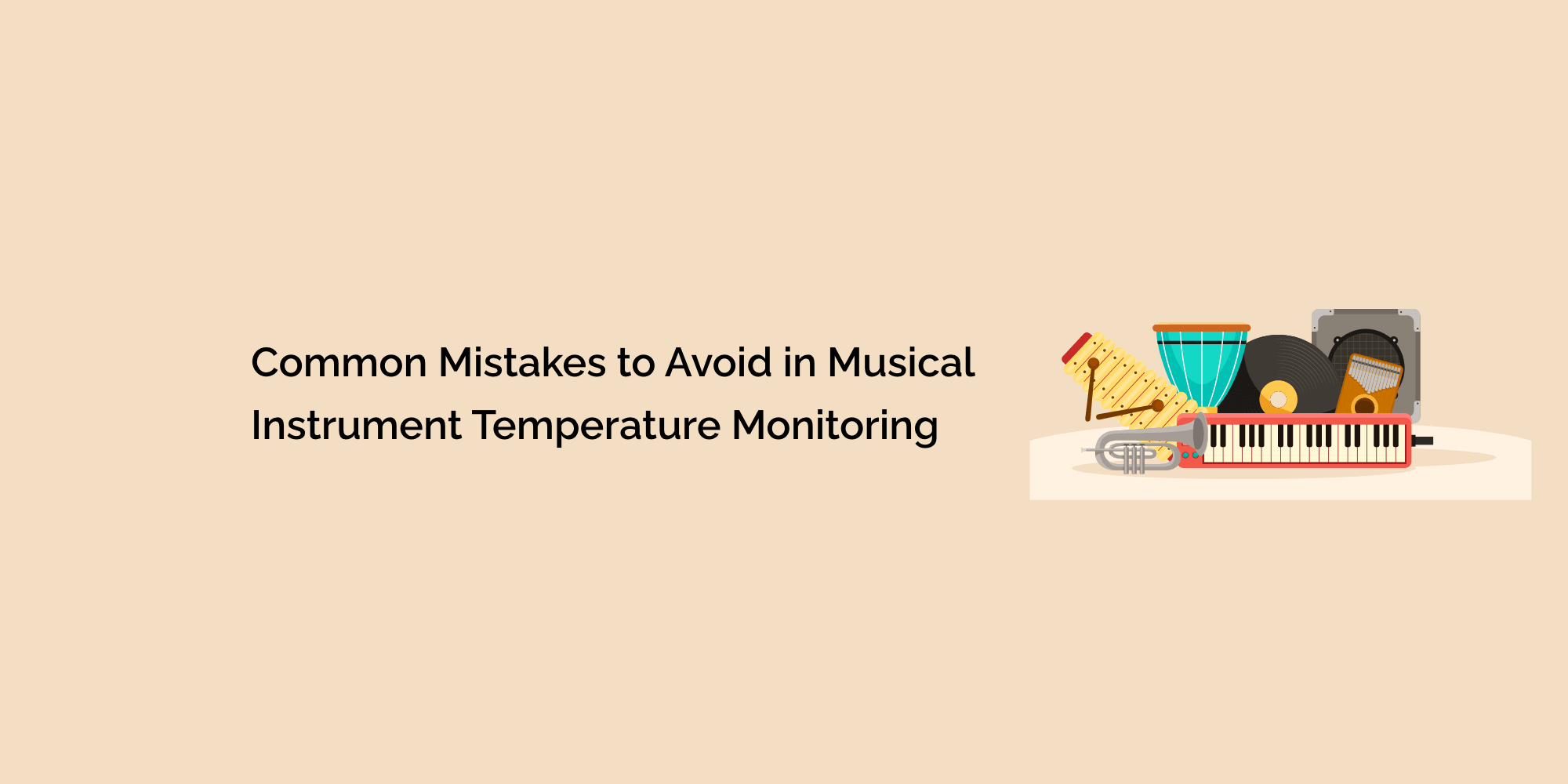Temperature monitoring is a critical aspect of maintaining optimal conditions for musical instruments. Fluctuations in temperature can lead to damage, affect performance, and shorten the lifespan of devices. However, ensuring accurate and effective temperature monitoring requires attention to detail and avoiding common mistakes. In this detailed blog, we will explore the common mistakes to avoid in musical instrument temperature monitoring. By understanding these mistakes and implementing proper temperature monitoring practices, musicians and instrument caretakers can protect their instruments, maintain stability, and preserve their value and performance.
The Importance of Accurate Temperature Monitoring for Musical Instruments
Accurate temperature monitoring is crucial for maintaining optimal conditions and preserving musical instruments. Temperature fluctuations can lead to instrument damage, compromised performance, and shortened lifespan. Reliable temperature readings play a vital role in instrument care and protection.
Inadequate Sensor Placement
Proper sensor placement is essential for accurate temperature monitoring. Sensors should be strategically placed in critical areas, such as instrument storage rooms or cases, to capture the temperature near the instruments. Common placement errors, such as incorrect positioning or obstructed sensors, should be avoided.
Neglecting Regular Calibration
Regular calibration is necessary to ensure the accuracy of temperature monitoring devices. Neglecting calibration can lead to inaccurate readings, compromising the effectiveness of temperature monitoring. Regular calibration should be scheduled and performed according to manufacturer guidelines.
Lack of Real-time Monitoring and Alerts
Real-time monitoring provides continuous temperature tracking and alerts users to temperature deviations. It allows prompt action to rectify temperature fluctuations and prevent damage to instruments. Refrain from receiving real-time monitoring and the absence of instant temperature alerts can lead to missed opportunities for intervention.
Ignoring Temperature Trends and Patterns
Analyzing temperature data and identifying trends and patterns is crucial for effective instrument care. Ignoring temperature trends can result in overlooking potential issues or vulnerabilities. Regular analysis of temperature data helps identify patterns and take preventive measures accordingly.
Overlooking Instrument-specific Temperature Requirements
Different instruments have specific temperature requirements based on materials, construction, and manufacturer recommendations. Overlooking these individual needs can lead to suboptimal instrument storage and usage conditions. Tailoring temperature monitoring practices to suit different instruments ensures proper care and preservation.
Failure to Integrate Temperature Monitoring with Maintenance
Integrating temperature monitoring with routine instrument maintenance is crucial for comprehensive care. Regular maintenance procedures should include temperature checks to identify and address temperature-related issues promptly. Combining temperature monitoring and maintenance maximizes instrument longevity.
Lack of Education and Training on Temperature Monitoring
Awareness and education on temperature monitoring are essential for musicians and instrument caretakers. Knowledge can result in adequate monitoring practices. Providing resources, guidelines, and training on temperature monitoring ensures that musicians and caretakers understand the importance of accurate tracking and follow best practices.
Inadequate Backup Systems and Emergency Preparedness
Having backup cooling systems is crucial for emergencies and power outages. Inadequate preparation can result in temperature fluctuations and potential instrument damage. Implementing backup procedures and developing emergency preparedness plans safeguards instruments during unexpected situations.
Overreliance on Outdated or Inaccurate Monitoring Devices
Advancements in temperature monitoring technology provide more accurate and reliable options. Overreliance on outdated or inaccurate devices can compromise the effectiveness of temperature monitoring. Regular evaluation of monitoring devices ensures they meet the required standards and deliver accurate readings.
Failing to Take Action Based on Temperature Data
Temperature data analysis plays a crucial role in instrument care. Failing to take action based on temperature data can lead to missed opportunities for preventive measures. Analyzing temperature trends, identifying potential risks, and implementing preventative measures based on the data contribute to effective instrument maintenance.
Certainly! Here are some frequently asked questions (FAQs) regarding musical instrument temperature monitoring:
How can temperature monitoring help prevent instrument repairs?
By monitoring temperature levels, musicians and caretakers can identify potential temperature-related issues early. Taking prompt action to rectify temperature fluctuations helps prevent damage that would require costly repairs. Temperature monitoring contributes to the overall preservation and longevity of the instrument.
Can temperature monitoring devices be integrated with other systems?
Temperature monitoring devices can be integrated with other systems, such as HVAC or automation systems, to ensure temperature regulation. The integration allows more precise control of temperature conditions, creating a stable environment for instrument storage or performance spaces.
What should be done in case of power outages or emergencies?
Having backup cooling systems, such as portable air conditioners or cooling fans, is crucial to maintain temperature stability during power outages or emergencies. It is essential to have emergency preparedness plans in place to minimize the impact of such situations on the instruments.
Conclusion
Avoiding common mistakes in temperature monitoring is essential for maintaining optimal conditions and ensuring the longevity of musical instruments. By addressing issues such as inadequate sensor placement, neglecting calibration, lack of real-time monitoring, ignoring temperature trends, overlooking instrument-specific requirements, failure to integrate monitoring with maintenance, lack of education, inadequate backup systems, reliance on outdated devices, and inaction based on temperature data, musicians and instrument caretakers can protect their instruments and preserve their value and performance. Proper temperature monitoring practices and awareness and education guarantee accurate temperature readings and facilitate proactive measures to prevent damage and maintain stability. By avoiding these common mistakes, musicians can ensure their instruments thrive and continue to bring joy for years.








